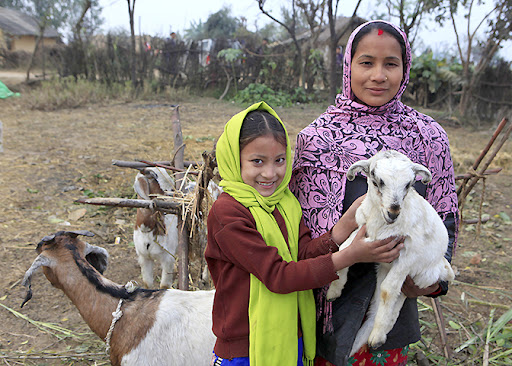Overview
Researchers
Travis Lybbert
Professor of Agricultural and Resource Economics at University of California, Davis
Sudhindra Sharma
Executive Director at Interdisciplinary Analysts (IDA)
Nicholas Magnan
Assistant Professor at Colorado State University
Conner Mullally
Associate Professor at University of Florida
Bhola Shrestha
Heifer International
- Country
- Nepal
- Timeline
- 10/01/2023 - 09/30/2026
- Constraints
- Gender, Input and Output Markets

Photo Credi: Heifer International
In low-and-middle-income countries, livestock production is a key growth sector for rural economies; however, farmers often lack access to quality veterinary services and markets to sell their livestock and animal by-products (e.g., milk, eggs, etc.). To overcome these barriers, livestock owners commonly organize into cooperatives to jointly purchase inputs and services, improve their bargaining power, and expand into new markets. In Nepal, these cooperatives are often supported by Community Animal Health Workers (CAHWs), a government-licensed paraveterinary worker who is trained to provide basic livestock care on a fee-for-service basis. In this study context, CAHWs provide a unique professional career path for women where other opportunities are limited. In addition to providing veterinary services, CAHWs are well-positioned to improve farmer connections to output markets. Can a digital collective marketing tool, implemented by CAHWs, improve the overall productivity and profitability of cooperatives in Nepal while promoting rural women’s entrepreneurship?
In partnership with Heifer Project Nepal, researchers will assess the take-up of a digital collective marketing tool designed to improve goat cooperatives’ access to markets. CAHWs use the tool to digitize inventory data from cooperative members (farmers) and transmit this information to cooperative leaders who would then use the data to negotiate sales with traders.
Researchers will test two versions of the digital collective marketing tool:
- Reward for sales: CAHWs will receive a small commission for each goat sold by one of their clients (goatkeepers) through the cooperative (outcome based); and
- Reward for sales and data collection: CAHWs will receive a small commission for each goat sold by one of their clients through the cooperative and also for collecting and transmitting data on member goat herds to the cooperative office (outcome and effort based).
Researchers will collect data from CAHWs on their use of the digital collective marketing tool, and survey cooperatives on goat sales and planned goat sales before and after the introduction of the tool. Additionally, researchers will survey a small number of goat keepers on their interactions with CAHWs. The take-up results of the study will inform a future randomized evaluation and provide insight into the feasibility of using a digital collective marketing tool to improve market linkages and rural women’s entrepreneurship in the livestock sector.
This pilot is ongoing, and results findings are forthcoming.